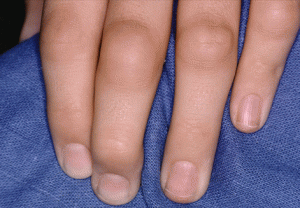A recent study concluded that hair style products are mostly safe when it comes to causing cancer. In the past there was some concern that the dyes for hair coloring could cause cancer. In a previous blog I mentioned that hair stylists are at a greater risk for developing bladder cancer. But in customers who had their hair colored this was more difficult to prove. The new study reviewed by CNN was based on a large cohort of 117,200 female nurses at Brigham and Women’s Hospital in Boston.
These 30-55-year-old nurses were observed for 36 years. Detailed information about hair coloring was part of the study.
Results of the hair coloring study
Women with light and medium use of hair dyes did not develop non-melanoma skin cancers, hematopoietic cancers or squamous skin cancers. The same was true for bladder cancer, melanoma, estrogen receptor positive breast cancer, progesterone receptor positive breast cancer and hormone receptor positive breast cancer. Furthermore hair coloring did not cause brain cancer, colorectal cancer, kidney cancer and lung cancer. 5% of women who ever used hair dyes did develop basal cell skin cancer; there was a total of 22,560 basal cell cancers that occurred.
The BJM showed that women who colored their hair regularly (termed “cumulative dose”) developed 24%-31% more breast cancer. This breast cancer was estrogen negative breast cancer (31%) and progesterone negative breast cancer (24%). They also developed 24% more ovarian cancers and 17% colorectal cancer than controls who did not dye their hair. Myeloid leukemias were also more common in the heavy use hair coloring group with 29% and follicular lymphomas with 13%. Other forms of leukemia were not more frequent.
Discussion
50% to 80% of women and about 10% of men ages 40 and older are using hair dye regularly in the United States and Europe. The above cited cancer frequencies were based on women with dark hair and a cumulative dose of more than 200 applications of permanent hair dye. Translated into years of application of hair dye this means coloring your hair for 16 to 17 years, if you color your hair once a month. The study is very powerful due to the large number of women examined and the amazingly long time of 36 years of observation.
Heavy use, medium and light use of hair dyes
It is interesting to note that only the heavy use of hair dye resulted in a few significant cancer figures. The light use (1 to 99 times) and medium use (100 to 199 times) of hair dyes did hardly lead to any cancer. There were some exceptions where light use of hair dye led to 34% more bladder cancer and to 67% more follicular lymphomas. These were oddities, because the lighter use of hair dyes led to higher amounts of these cancers than medium and heavy use. This is not what the researchers expected.
Hodgkin’s lymphoma and breast cancer
Hodgkin’s lymphoma was about 3- to 5-fold more common in all hair coloring categories compared to non-use of hair dye. The authors discussed subgroups of women as well. They noticed that black women using permanent hair dye had a higher risk to develop breast cancer than white women who only had a borderline increased risk. Estrogen negative, progesterone negative and hormone negative breast cancer was more likely to be caused by heavy use of hair dyes.
No association between the following cancers and hair dye use
The present study could not find an association between ever using hair dye and the following. The study found no association with cutaneous squamous cell carcinoma, melanoma, ovarian cancer and colorectal cancer. In addition there also was no association with kidney cancer, lung cancer, and brain cancer. But it found a slight increased risk (5%) of basal cell carcinoma.
The study contains no information regarding the specific ingredients in hair dye that are carcinogenic. In the US supervision of permanent hair dyes by the FDA is rather loose. This leaves the manufacturer mostly in charge regarding the composition of the hair dyes. This is different in Europe and in Japan. Here manufacturers removed several carcinogenic substances from hair dyes because of regulations by the local regulatory bodies. This could have a cancer-lowering effect in these countries.
Conclusion
This large study from the British Medical Journal, published Sept. 2, 2020 explains the relationship of cancer risk to permanent hair dyes. The study lasted 36 years and involved 117,200 female nurses. More than 96% of the women were Caucasians. This study showed that for most people who use permanent use hair dyes there is no association with most cancers. However, there was an association between a few cancers and the use of hair dyes. These were in 5% basal cell skin cancers. But breast cancer (31% estrogen receptor negative, 24% progesterone receptor negative), ovarian cancer (24%) and 17% colorectal cancer were among these too. There was also an increased risk of Hodgkin’s lymphoma.
Effect of screening by FDA regarding carcinogenic substances in hair dyes
All this data was based on the hair dyes used in the US. Supervision of permanent hair dyes by the FDA is rather loose, with the manufacturer being mostly in charge. This is different in Europe and in Japan. Here local regulatory bodies instructed manufacturers to remove several carcinogenic substances from hair dyes. This could have a cancer-lowering effect in these countries.







